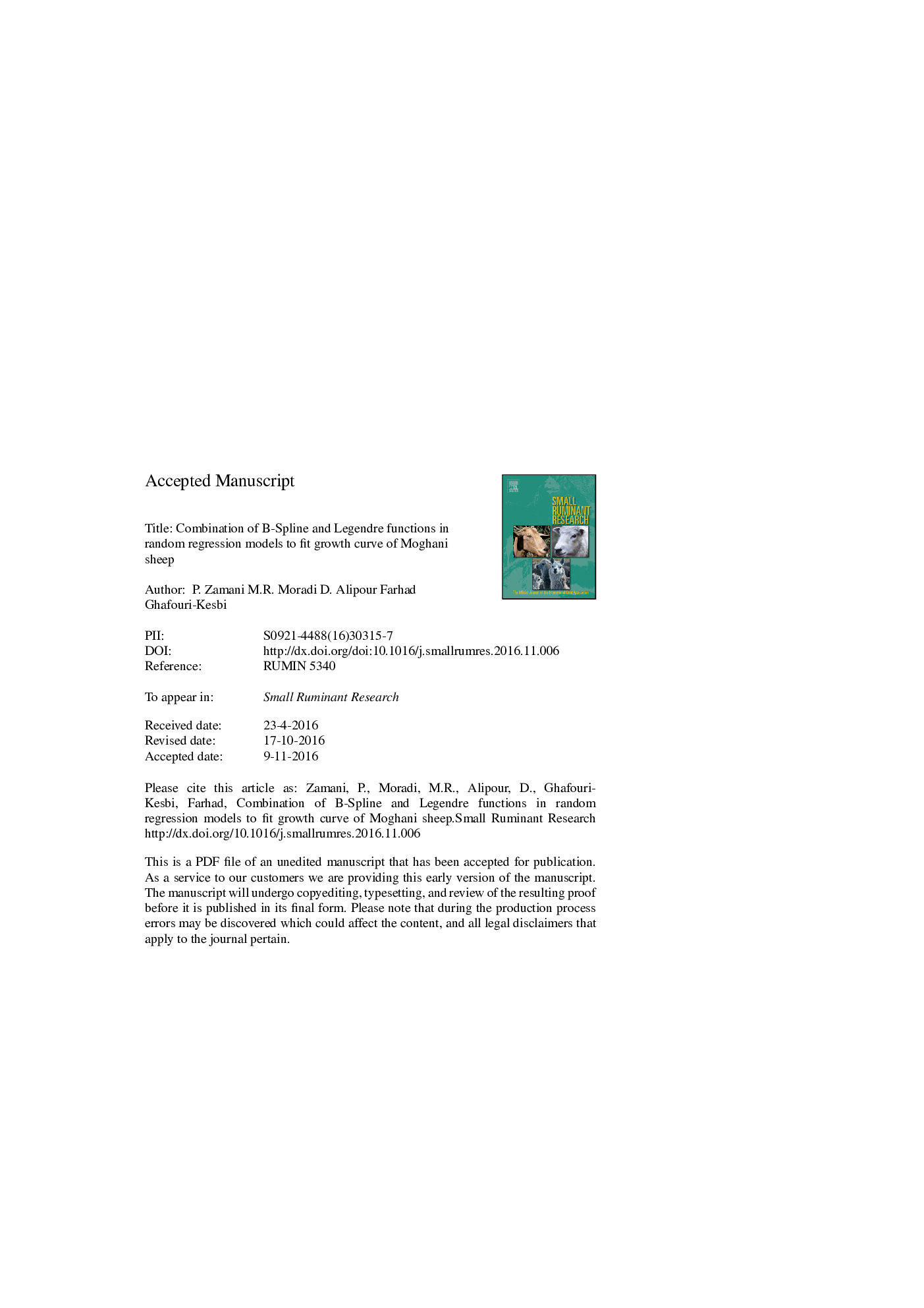| Article ID | Journal | Published Year | Pages | File Type |
|---|---|---|---|---|
| 5544330 | Small Ruminant Research | 2016 | 26 Pages |
Abstract
Random regression models (RRMs) were employed to estimate variance components for body weight (BW) records of Moghani sheep from 60 to 365Â days of age. A total of 9165 BW records of 2811 lambs, collected at a breeding station of Moghani sheep were used in this study. Various combinations of Legendre (Leg) polynomials with 2 and 3 orders of fit and linear and quadratic B-Splines (BS) with 2 or 3 coefficients were fitted for fixed and random regression parts of the RRMs. The models were compared based on Akaike's and Bayesian Information Criteria. Different combinations of Leg and BS functions had almost similar estimates of variance components as ratios to total phenotypic variance, but the models with Leg polynomials especially in random regression parts had easier convergence and better fitting criteria on average. However, a model fitting quadratic B-Splines with 3 coefficients in fixed regression part and 3, 3, 2 and 2 coefficients for random direct additive genetic, permanent environmental, maternal genetic and maternal environmental effects, respectively was the best model. According to the best model, direct heritability (h2) was estimated in the range of 0.14-0.32 with a decrease from 60 to 120Â days of age and a subsequent increase to the end of trajectory. Coefficient of permanent environmental effects (p2) was in the range of 0.23-0.61 with an increasing trend throughout the trajectory. Maternal heritability (m2) and coefficient of maternal environment (c2) had low and negligible estimates, respectively. The results of the present study indicated potential of B-Splines for genetic evaluations of body weight in sheep, using RRMs.
Related Topics
Life Sciences
Agricultural and Biological Sciences
Animal Science and Zoology
Authors
P. Zamani, M.R. Moradi, D. Alipour, Farhad Ghafouri-Kesbi,
